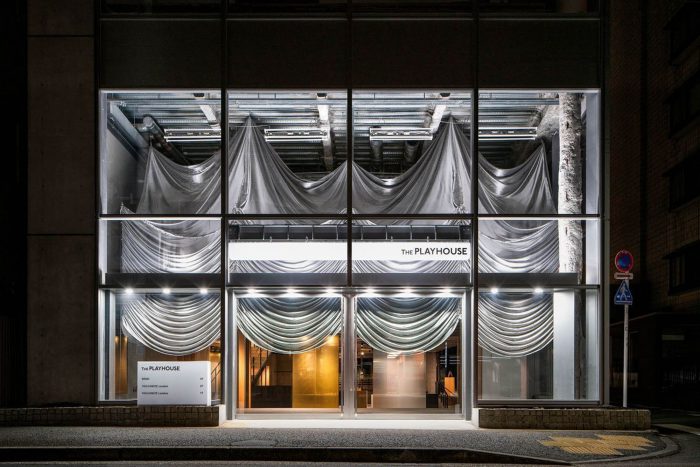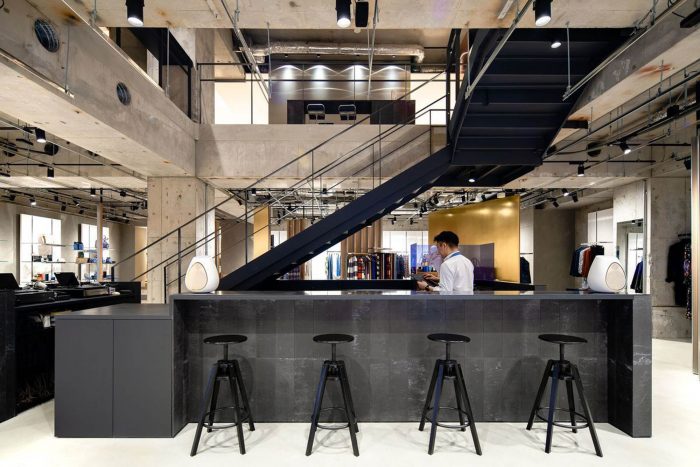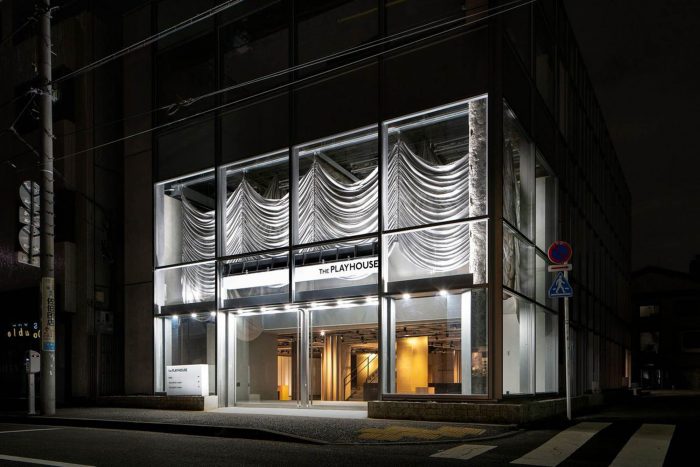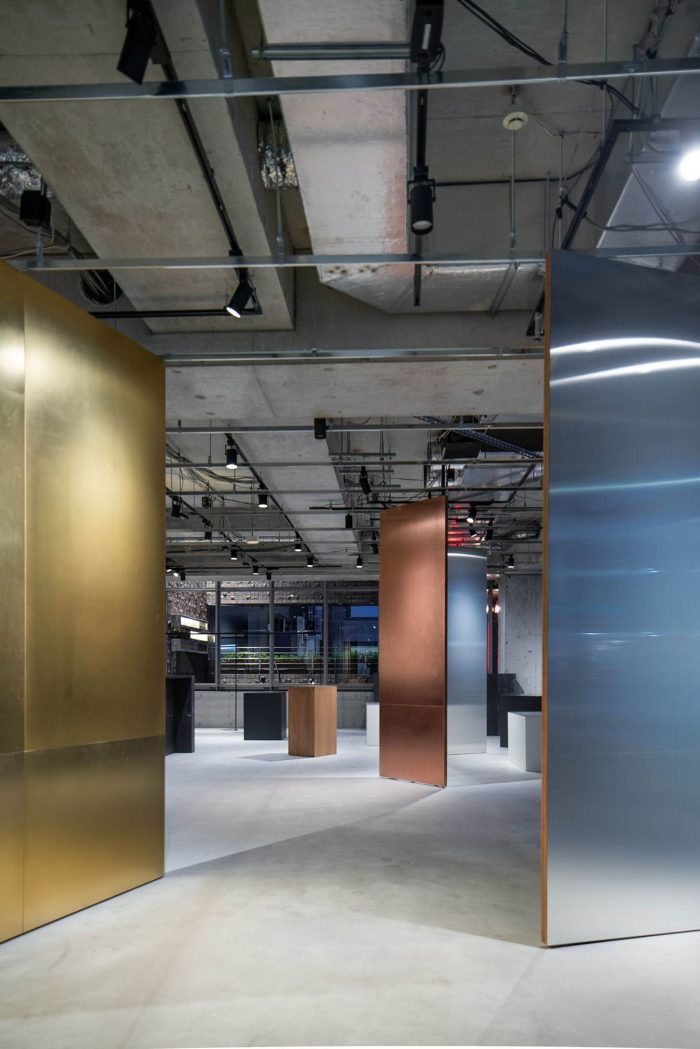The Playhouse是一个全装修项目,位于日本东京青山繁华的时尚区,楼高3层。建筑的地下和一层是一家英国时装店,二层是一家婚礼和活动策划公司的大厅。我们的设计团队面临的挑战是,通过重新考虑实体店的现有功能,设想一个新的Post-COVID店的空间模式。
The Playhouse is a full renovation project of 3 stories high building locates in a busy fashion district of Tokyo, Aoyama in Japan. The building accommodates a British fashion store on the ground and first level, and a hall for a wedding and event planning company on the second level. Our design team was challenged to envision a new spatial model of Post-COVID store by reconsidering the existing function of physical shops.

全球冠状病毒大流行造成的影响之一是数字化的显著加速。这种正在进行的快速运动表明,未来通过虚拟商店进行购物的体验将大大增加。针对这样的社会形势,团队提出要重塑实体店的空间功能,从传统概念中的购买商品的地方变成学习、发现和体验产品品牌相关文化的地方。如果说购买行为可以在虚拟中完成,那么实体店的最终目的应该是提升潜在客户的兴趣,从而将他们与产品销售联系起来。
One of the impacts caused by the global coronavirus pandemic is a remarkable acceleration of digitalization. This ongoing rapid movement indicates the future in which the shopping experience will be greatly more common to be done through virtual stores. In response to this social situation, the team proposed to reimagine the spatial function of the physical store from a conventional concept of a place to purchase goods into a place to learn, discover and experience the cultures related to the brands of products. If the act of purchase can be done virtually, the ultimate purpose of a physical store should be to elevate potential customers’ interest which will connect them to product sales.
项目开始时,将整个建筑视为另一种形式的剧场,通过设计可转换的建筑元素,让各种活动在整个建筑中进行。入口中庭被设计成一个飞塔,并配有可移动的幕布,为讲座和音乐会等活动搭建临时舞台,最多可容纳50人。
The project is started by considering the whole building as an alternative form of theatre by designing transformable architectural elements that allow a variety of events to take place throughout the building. The entrance atrium is designed as a fly tower with a movable curtain that creates a temporary stage for events such as talks and concerts, accommodating up to 50 people.
地面的商店区由多面可旋转的墙体组成,为举办各种活动提供了灵活的空间,如Pop-up市场、时装秀或工作坊。每面墙都被分配给不同的品牌,每隔几个月就会定期更换,从而在整个楼层形成一个小型的Pop-up商店的集合。位于一楼中央的门厅将客人引向二楼的主厅,同时在其外围塑造了一个展示空间,用于展示店内常设品牌的产品。二层的大厅由各种纺织品组成,使空间的大小可以波动,以便举办不同规模和内容的活动。
The shop area on the ground level is composed with multiple rotatable walls, providing flexible space for hosting various activities like pop-up market, fashion show or workshops. Each wall is allocated to a different brand that regularly changes every few months, creating a collection of small pop-up stores across the floor. The foyer placed in the centre of the first floor leading guests to the main hall on the second level while shaping a display space for the shop’s permanent brands’ products on its periphery. The hall on the second floor is composed with various textiles that allow the space to fluctuate its size in order to host events of various scales and contents.
Playhouse挑战了传统商店的空间模式,在销售空间的同时,创造出文化和各种活动共存的房间,而不是将整个楼层用于展示产品。该项目旨在探索后COVID社会中商店空间的一种可能的未来,因为我们生活的虚拟化已经变得更加成熟。
The Playhouse challenged the conventional spatial model of shops by creating rooms for culture and diverse activities to co-exist whilst the sales space rather than dedicate entire floor for displaying products. The project aimed to explore one of the possible future of shop space for Post-COVID society where the virtualization of our living lives become more established.
建筑师:Haruki Oku Design, PAN-PROJECTS
面积 : 1367 m²
年份:2020年
摄影:Kenji Seo
首席建筑师:Yuriko Yagi, Kazumasa Takada, Haruki Oku
客戶 : Crazy Inc., BLBG Inc.
国家 : 日本
Architects: Haruki Oku Design, PAN-PROJECTS
Area: 1367 m²
Year: 2020
Photographs: Kenji Seo
Lead Architects: Yuriko Yagi, Kazumasa Takada, Haruki Oku
Clients:Crazy Inc., BLBG Inc.
Country:Japan





































